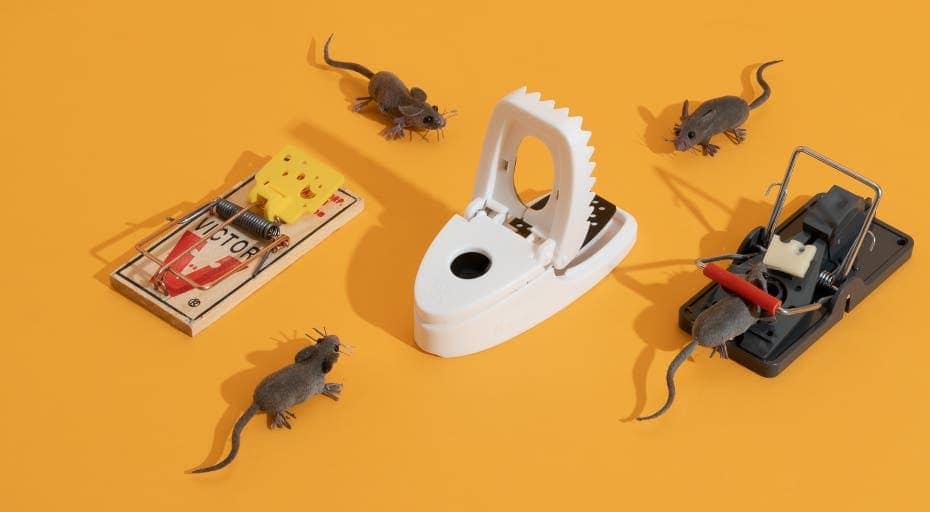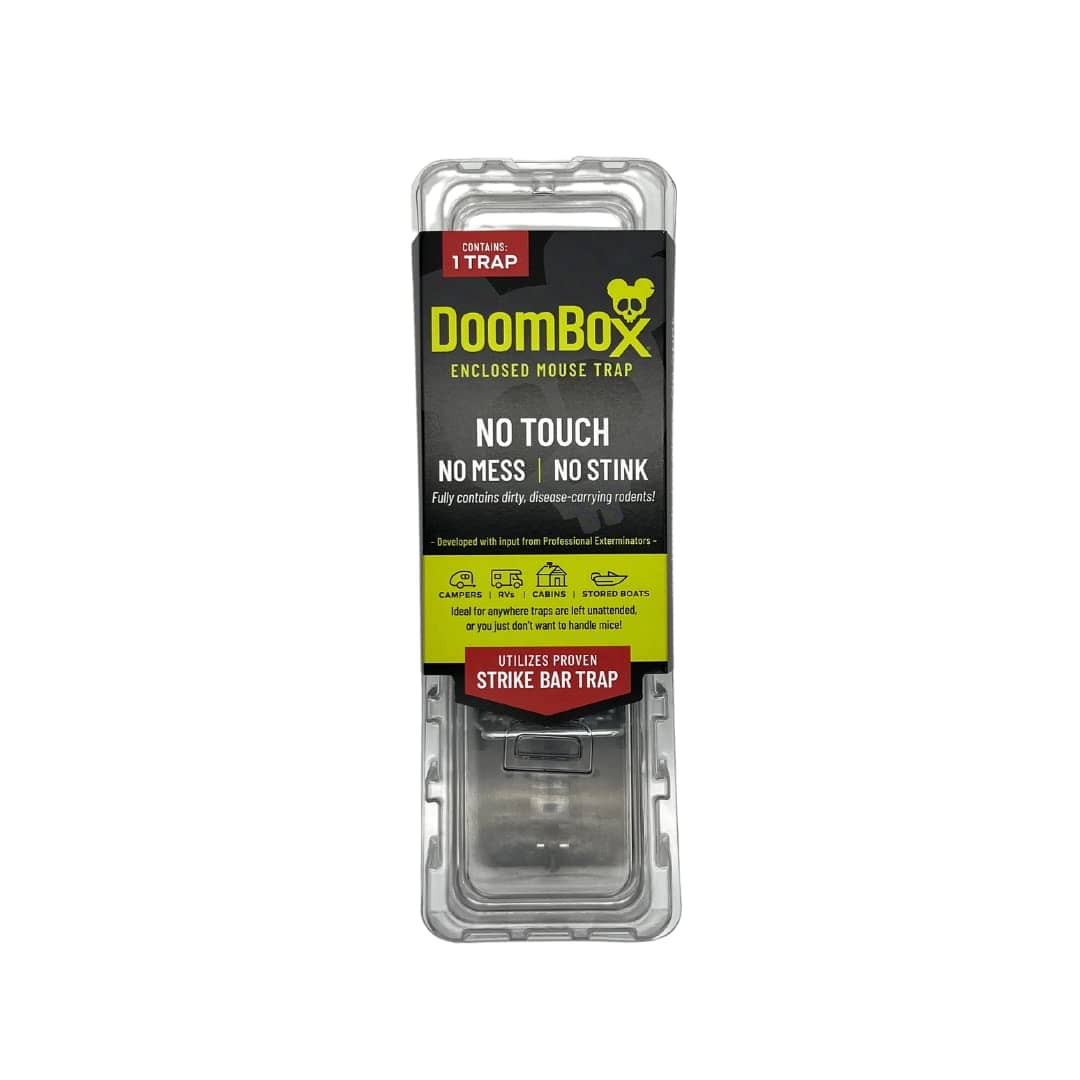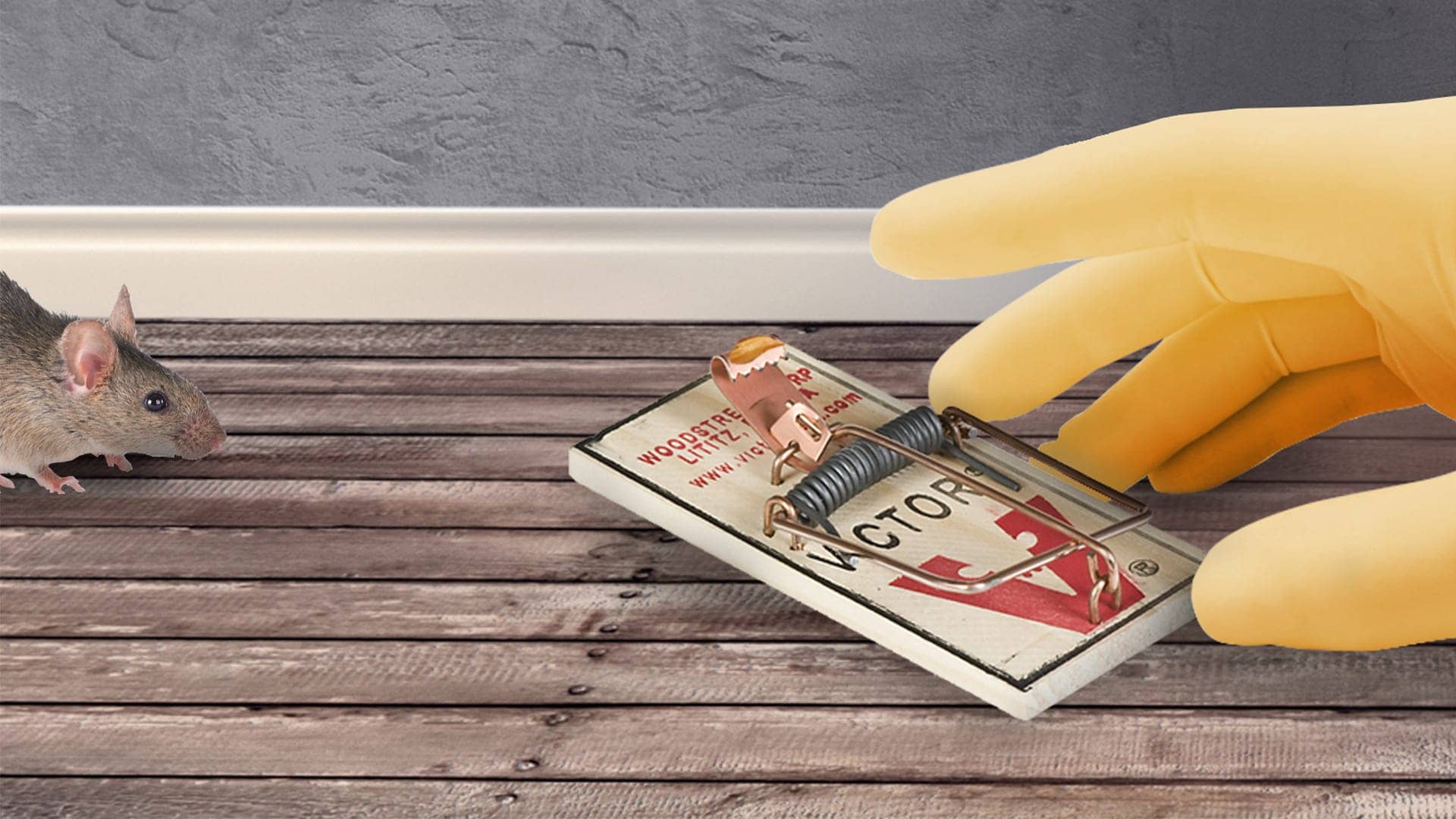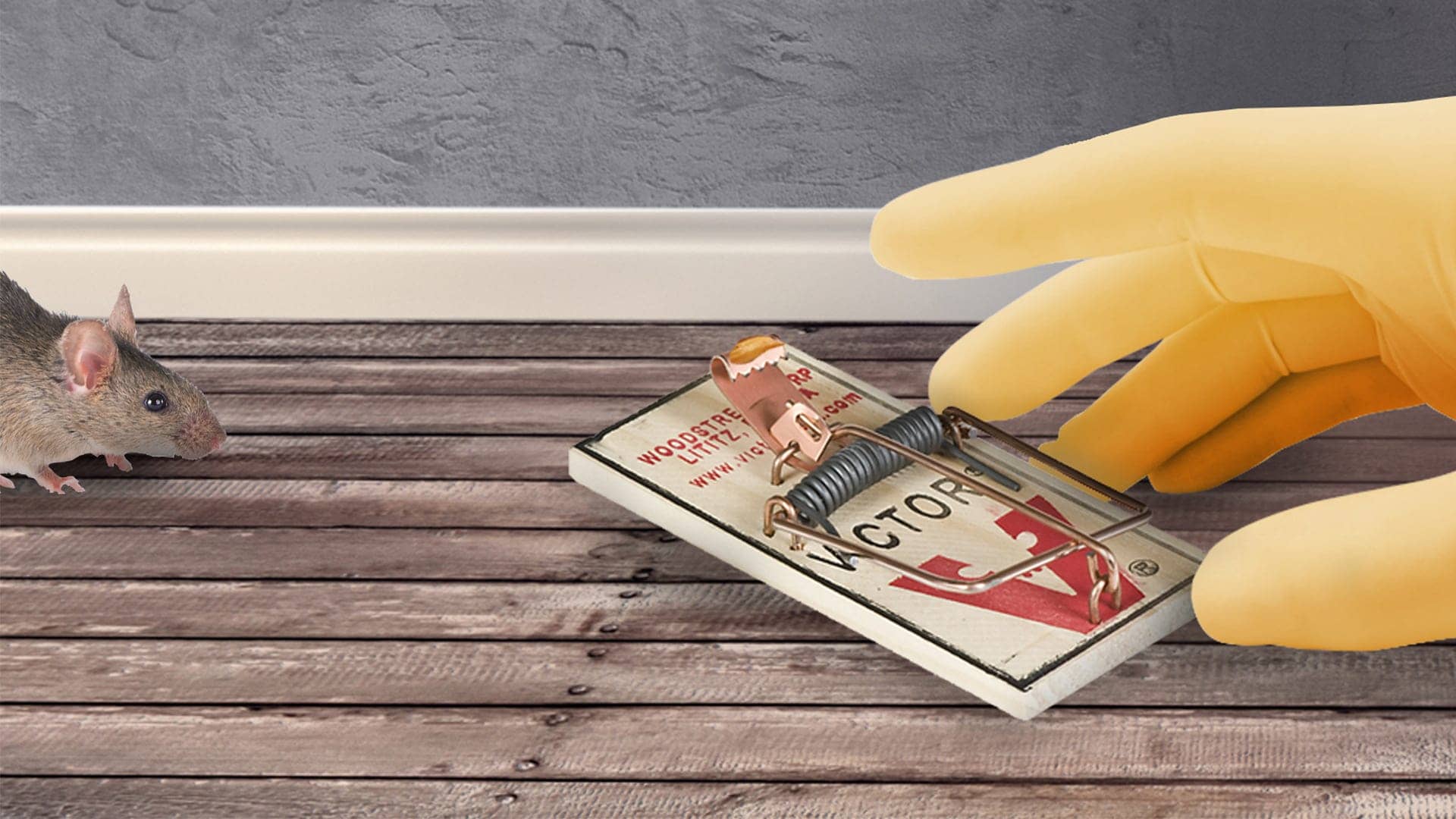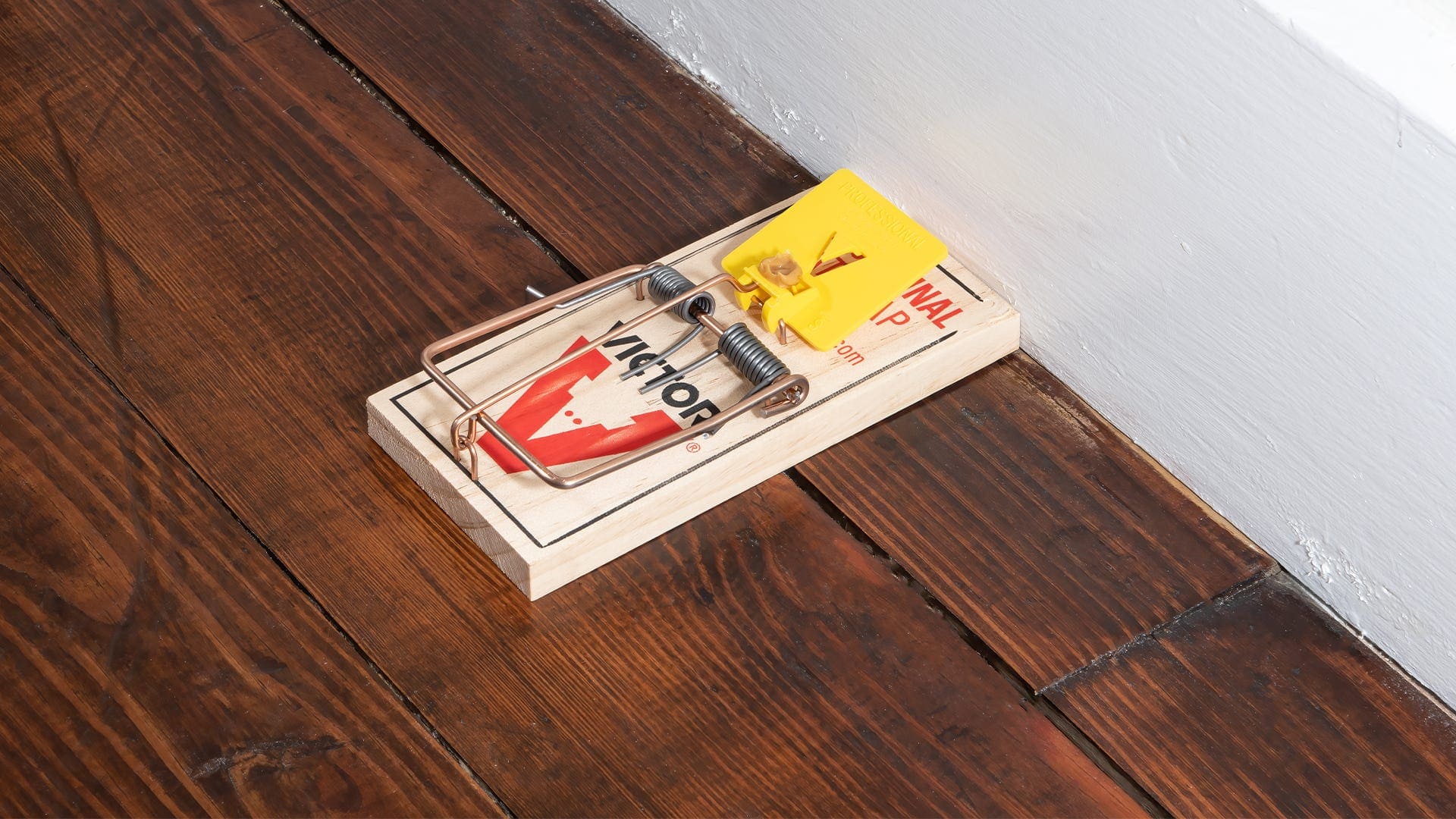To effectively control rodents in attics and basements, place mouse traps strategically.
The Impact Of Rodents In Attics And Basements
Discover the impact of rodents in attics and basements and how placing mouse traps in these areas can effectively control and eliminate rodent infestations. Say goodbye to unwanted pests with this simple and practical solution.
Rodents can cause severe damage and pose significant health risks when they infest attics and basements. Understanding the impact of these pests is crucial for effective rodent control. Here’s what you need to know:
Dangers Of Rodent Infestation
- Rodents can chew through electrical wires and cause short circuits, leading to fire hazards.
- They gnaw on insulation, wooden structures, and belongings, resulting in structural damage and financial losses.
- Rodents create nests from materials found in attics and basements, such as insulation and paper, increasing the risk of fire.
- These pests contaminate food stored in these areas, causing foodborne illnesses when consumed.
- The droppings, urine, and saliva left behind by rodents can trigger allergies and asthma in individuals.
- The presence of dead rodents or their decomposing bodies leads to foul odors, attracting insects and other pests.
Health Risks Associated With Rodents
- Rodents carry various diseases and pathogens that can be transmitted to humans through direct contact, bites, or by inhaling contaminated dust particles.
- Hantavirus, transmitted through rodent droppings, can cause severe respiratory symptoms and even death.
- Salmonellosis, a type of food poisoning, can be caused by consuming food contaminated with rodent feces.
- Leptospirosis, transmitted through rodent urine, can result in fever, muscle pain, and organ damage.
- They can introduce fleas, ticks, and mites into homes, carrying additional disease risks.
- The allergens present in rodent droppings and urine can cause allergic reactions and respiratory issues.
Understanding the dangers and health risks associated with rodents in attics and basements is essential for taking effective measures to control and prevent infestations. By implementing proper rodent control strategies, you can safeguard your property and protect the health of your family.
Choosing The Right Mouse Traps
Looking to effectively control rodents in your attics and basements? Choose the right mouse traps for your needs and place them strategically for optimal results.
Understanding Different Types Of Traps
- Snap traps: Snap traps are the most common type of mouse traps and are highly effective in catching rodents. They consist of a metal bar that snaps shut when triggered by the mouse’s movement. These traps are easy to set up and dispose of, making them a popular choice for homeowners. However, they can be dangerous if not handled properly.
- Glue traps: Glue traps are adhesive boards that capture mice by sticking them to the surface. They are non-toxic and can be placed in areas where chemical alternatives are not suitable. However, they are not as effective as snap traps and can cause the mice distress.
- Electronic traps: Electronic traps are a more modern and humane way of capturing mice. They work by delivering a quick electric shock when the mouse enters the trap. These traps are ideal for those who want to avoid handling live or dead rodents and ensure a quick, humane kill.
- Multiple catch traps: Multiple catch traps are designed to catch multiple mice at once. These traps have a one-way entry system that allows mice to enter but prevents them from escaping. They are ideal for infestations or larger spaces where several mice need to be captured.
- Live traps: Live traps allow for the capture of mice without harming them. These traps are typically cage-like structures with a door that closes when the mouse enters. Once caught, the mice can be released into a different location away from your home.
Factors To Consider When Selecting Traps
- Size of the trap: It is essential to choose a mouse trap that is appropriate for the size of the rodents you are dealing with. A trap that is too small may not be effective in catching larger mice, while a trap that is too large may not trigger for smaller mice.
- Safety: Consider the safety aspects of each type of trap. Snap traps can be dangerous to handle and may cause injury if not used correctly. Glue traps may cause distress to the mice. Evaluate the risk involved and choose a mouse trap that suits your comfort level and concerns.
- Location: Take into account the location where you will be placing the trap. Attics and basements may have different environmental conditions, such as temperature and humidity, which can affect the trap’s efficiency. Choose a trap that is suitable for the specific area you are targeting.
- Placement: Different traps have different placement requirements. Some traps need to be placed along walls or in areas where mice typically travel, while others may require bait to attract the mice. Consider the specific placement requirements of each trap to maximize its effectiveness.
- Maintenance and disposal: Consider the ease of setting up, cleaning, and disposing of the trap. Snap traps are simple to use and dispose of, while glue traps may require more effort to clean up and may need to be replaced after use. Evaluate your willingness and ability to handle the maintenance and disposal tasks associated with each trap type.
Choosing the right mouse trap is crucial for effective rodent control in attics and basements. By understanding the different types of traps available and considering factors such as trap size, safety, location, placement, and maintenance, you can select the most suitable trap to address your specific rodent problem.
Proper Placement Of Mouse Traps
Placing mouse traps strategically in attics and basements is vital for ensuring effective rodent control in your home. By carefully considering the placement of these traps, you can maximize their efficiency and effectively eliminate any mouse infestations that may be present.
Identifying High-Activity Areas
- Attics and basements are common hotspots for rodent activity due to their secluded and cozy environment.
- Look for signs of rodent presence such as droppings, gnawed items, grease marks, or shredded materials.
- Pay attention to areas near food sources like stored goods or garbage cans.
- Inspect for any cracks, crevices, or holes that act as entry points for rodents.
- Keep an eye out for nesting materials such as shredded paper, fabric, or insulation.
Strategic Placement For Maximum Effectiveness
- Place mouse traps along walls or near areas where rodents are likely to travel. Rodents tend to stick close to edges for safety.
- If you notice droppings or other signs of rodents, set traps in these specific areas to target their high-activity zones.
- Consider areas near rodent burrows, nests, or runways. These are indications of their frequent routes.
- Set multiple traps in a row, about 5-10 feet apart, to increase the chances of capturing multiple rodents.
- Ensure the traps are placed in areas inaccessible to children and pets to avoid accidental harm.
Remember, the proper placement of mouse traps is crucial in effectively controlling rodent populations in attics and basements. Identifying high-activity areas and strategically placing traps can significantly enhance your trapping success. By following these guidelines, you can minimize the risk of reinfestation and maintain a rodent-free environment.
Clearing Clutter And Nesting Materials
Discover the power of effective rodent control by strategically placing mouse traps in attics and basements. Learn how to clear clutter and provide nesting materials for optimal results.
Placing Mouse Traps in Attics And Basements for Effective Rodent Control
Having mice or rats scurrying around in your attic or basement can be a real nuisance. These areas provide perfect hiding spots for rodents, making it important to take the necessary steps to ensure effective rodent control. One crucial aspect to address is clearing clutter and nesting materials, as these can serve as inviting havens for mice and rats.
Read on to discover effective ways to eliminate potential hiding spots and attractants and regain control of your attic or basement.
Removing Potential Hiding Spots:
- Clear out unnecessary items: Get rid of any clutter or debris that may accumulate in your attic or basement. The more open and organized the space, the less likely it is for rodents to find hiding spots.
- Seal cracks and crevices: Inspect your attic and basement for any openings that could serve as entry points for rodents. Seal them using steel wool or caulk to prevent easy access.
- Check for holes in walls and floors: Conduct a thorough inspection of your attics’ and basements’ walls and floors. Patch up any holes or gaps that may have developed over time.
Eliminating Rodent Attractants:
- Remove food sources: Store food in tightly sealed containers made of glass or metal to prevent mice from accessing it. Clean up any food spills immediately and avoid leaving pet food out overnight.
- Keep the area clean: Regularly sweep and vacuum your attic and basement to eliminate crumbs and small debris that may attract rodents. Pay extra attention to corners, as mice and rats tend to hide in these areas.
- Minimize moisture: Use dehumidifiers or fix any leaks or water damage in your attic or basement. Rodents are attracted to damp environments, so reducing moisture levels will make your space less appealing to them.
By clearing clutter and nesting materials and eliminating rodent attractants, you can significantly reduce the likelihood of mice or rats taking up residence in your attic or basement. Implement these measures consistently to maintain a rodent-free environment and regain control of these areas in your home.
Sealing Entry Points
Eliminate rodent infestations by sealing entry points in attics and basements. Placing mouse traps strategically will effectively control and prevent further rodent activity in these areas.
Placing Mouse Traps in Attics And Basements for Effective Rodent Control
Identifying And Closing Off Rodent Access Points:
Rodents can find their way into your attic or basement through small openings and gaps. Identifying these access points is crucial for effective rodent control. Here are some ways to do it:
- Inspect the exterior: Carefully examine the exterior of your home, paying attention to areas where pipes, wires, or vents enter the building. Look for any cracks or openings that rodents could use as entry points.
- Check for gaps in siding and foundation: Inspect the siding and foundation for gaps or holes. Rodents can squeeze through even the smallest openings, so seal any gaps with caulk or wire mesh.
- Examine windows and doors: Check for gaps around windows and doors. Replace or repair any damaged weatherstripping, and consider installing door sweeps to prevent rodents from entering.
- Evaluate the attic and basement: Inside your home, inspect the attic and basement for any holes or openings. Common areas to check include vents, utility openings, and gaps around wires or pipes.
Closing off these access points is essential to prevent rodents from entering your attic or basement. Some effective methods include:
- Seal cracks and gaps: Use caulk, foam sealant, or wire mesh to seal any cracks or gaps found during your inspection. Ensure that the materials used are rodent-proof to prevent them from gnawing through.
- Install door sweeps and weatherstripping: Adding door sweeps to doors and weatherstripping to windows can act as a barrier, preventing rodents from squeezing through gaps.
- Secure vents: Install mesh screens over vents to keep rodents out while still allowing airflow.
- Repair damaged areas: Any damaged or rotten areas in the exterior or interior should be repaired promptly to eliminate potential entry points.
- Consider professional help: If you’re unsure about identifying and closing off access points, consider hiring a professional pest control service. They have the expertise and tools to locate and seal off any possible entry points effectively.
Importance Of Preventive Measures:
Taking preventive measures is crucial for long-term rodent control. Here’s why it matters:
- Avoid health risks: Rodents can carry diseases and parasites that pose health risks to humans. By sealing off entry points, you can reduce the chances of rodents entering your living spaces and spreading pathogens.
- Prevent property damage: Rodents have sharp incisors that can cause substantial damage to electrical wiring, insulation, and other materials in your attic or basement. By preventing their entry, you can avoid potential expensive repairs.
- Decrease rodent population: By eliminating access points, you make it harder for rodents to find shelter and food in your home, ultimately reducing their population.
- Minimize food contamination: Rodents can contaminate food supplies with their droppings, urine, and hair. Sealing off entry points helps keep them away from your kitchen and pantry, ensuring food hygiene and safety.
Remember, identifying and closing off rodent access points is an essential step in effective rodent control. By taking preventive measures, you can protect your home, health, and belongings from these unwanted intruders.
Setting Up Bait Stations
Accurately place mouse traps in attics and basements to effectively control rodents by setting up bait stations. Ensure strategic placement for maximum effectiveness in trapping mice.
Placing Mouse Traps In Attics And Basements For Effective Rodent Control
Are you struggling with pesky rodents infiltrating your attics and basements? Fret not, as we introduce to you a complementary approach to trapping these unwanted guests. By strategically setting up bait stations, you can maximize the effectiveness of your rodent control efforts.
In this section, we will delve into the details of this method, including selecting appropriate baits for optimum results.
Complementary Approach To Trapping
Utilizing bait stations alongside traditional mouse traps can significantly enhance your rodent control strategy. Here are key reasons why incorporating bait stations is beneficial:
- Increased attraction: Bait stations act as enticing feeding zones for rodents, drawing them away from hidden corners and toward the designated areas.
- Targeted placement: You have the freedom to strategically position bait stations in attics and basements, focusing on areas prone to rodent activity.
- Safety measures: Bait stations provide a safeguard for children and pets, preventing accidental access to harmful baits.
Selecting Appropriate Baits For Effective Results
Choosing the right baits can make or break your rodent control efforts. Here are some considerations to ensure your baits yield successful outcomes:
- Peanut butter: Known for its irresistible aroma, peanut butter serves as a highly effective bait, attracting rodents with its rich scent.
- Cheese: A classic choice, cheese can entice mice and rats with its strong odor. Opt for soft, pungent varieties for optimal results.
- Chocolate: Yes, even rodents have a sweet tooth! Chocolate baits can be a tempting treat that entices mice, particularly dark chocolate due to its potent scent.
- Nutmeats: Walnuts, almonds, or hazelnuts can serve as excellent bait options. Their natural oils release an alluring fragrance for rodents.
- Seeds and grains: Items such as sunflower seeds, oatmeal, or bird feed can be enticing baits, appealing to rodents’ dietary preferences.
By carefully selecting appropriate baits and strategically placing bait stations, you can take control of your rodent problem in attics and basements. Remember, it’s important to regularly monitor and replenish the bait stations to ensure continuous effectiveness. Keep those sneaky rodents at bay with this complementary approach to trapping!
Understanding Rodent Behavior
Understanding the behavior of rodents is crucial for effective rodent control in attics and basements. By strategically placing mouse traps in these areas, homeowners can tackle the problem head-on.
Insights Into Mouse Movement Patterns
- Mice are nocturnal creatures and tend to be most active during the night.
- They are agile climbers and can easily access attics and basements through small openings or gaps.
- Mice prefer to travel along walls and other structures, as it provides them a sense of security and helps them hide from predators.
- Understanding their movement patterns can help you strategically place mouse traps in areas where they are likely to travel, increasing the chances of capturing them.
Identifying Signs Of Rodent Activity
- Keep an eye out for small droppings resembling rice grains, as mice tend to leave their waste behind as they move.
- Gnaw marks on wood, wires, or other materials indicate a rodent infestation.
- Look for small holes or gaps in walls, floors, or foundation as potential entry points for mice.
- Chewed food packaging or other materials may also indicate their presence.
- Unpleasant odors, particularly ammonia-like smells, can be a sign of mouse urine.
Remember, it is important to address rodent infestations promptly to prevent further damage and potential health risks. By understanding mouse movement patterns and identifying signs of their activity, you can take appropriate measures to effectively control them in attics and basements.
Placement Considerations For Attics
When setting mouse traps in attics and basements, it is important to consider placement for effective rodent control. Strategically positioning traps in high-activity areas and near potential entry points can increase success in eliminating mice.
Targeting High-Risk Areas In Attics:
- Attics are notorious hiding spots for rodents like rats and mice. To effectively control rodent populations in attics, it is crucial to target high-risk areas where they are most likely to nest or travel. Consider the following points:
- Entry points: Look for any gaps or cracks in the attic walls, roof, or vents where rodents can enter. Seal these openings to prevent their access.
- Insulation gaps: Rodents often burrow through insulation materials for nesting. Inspect the insulation for any signs of disturbance or gaps where they can hide.
- Stored items: Attics often serve as storage spaces, creating clutter that attracts rodents. Clear out any unnecessary items and organize the remaining ones properly.
- Electrical wiring: Rodents may chew on electrical wires, creating fire hazards. Pay attention to wiring in the attic and use protective measures like cable covers.
Ensuring Safe And Effective Placement:
- Placing mouse traps strategically in the attic is crucial for effective rodent control. Follow these tips to ensure safe and efficient trap placement:
- Trapping zones: Identify areas where you have observed rodent activity, like chewed wires, droppings, or gnaw marks. These are ideal zones for trap placement.
- Distance from human activity: Place traps away from areas where people might accidentally trigger them. Optimal areas include corners or along rodent paths.
- Secure placement: Make sure the traps are stable and secure, preventing rodents from stealing the bait or escaping after getting caught.
- Multiple traps: Utilize a sufficient number of traps to increase the chances of capturing multiple rodents at once.
- Bait selection: Choose appropriate bait that is enticing to rodents but safe for use in the attic, considering factors like odor and toxicity.
Remember, effective rodent control in attics requires continuous monitoring and trap maintenance. Regularly check and reset traps, dispose of captured rodents safely, and address any potential entry points to prevent re-infestations. Taking these measures ensures a rodent-free and safe attic environment.
Placement Considerations For Basements
Basements present unique considerations for effective rodent control. Strategically placing mouse traps in attics and basements can proactively address rodent infestations, preventing damage and potential health risks in the home.
Addressing Unique Challenges In Basements:
Basements present unique challenges when it comes to placing mouse traps for effective rodent control. Here are some key considerations to keep in mind:
- Darkness: Basements are often dark, which makes it easier for rodents to hide and navigate without being noticed. Take this into account when deciding where to place your traps.
- Limited airflow: Basements typically have limited airflow, which can affect the effectiveness of certain types of traps. Choose traps that do not rely heavily on airflow or consider using alternative methods like glue traps or bait stations.
- Moisture and humidity: Basements are prone to moisture and higher humidity levels, which can impact the performance of some trap types. Opt for traps that are resistant to moisture or use waterproof covers to protect them.
- Irregular surfaces: Basements often have uneven or rough surfaces, making it challenging to position traps securely. Look for traps with stable bases or consider using adhesive traps that can be attached to walls or other surfaces.
- Dust and debris: Basements tend to accumulate dust and debris, which can hinder the effectiveness of traps. Regularly clean and maintain the area around the traps to ensure no obstacles obstruct the rodent’s path to the trap.
- Safety precautions: Basements may have exposed wiring, pipes, or other potential hazards that you should be mindful of when placing traps. Avoid placing traps near these hazards to prevent damage or potential dangers.
By considering these unique challenges, you can strategically place mouse traps in your basement for more effective rodent control. Remember to regularly monitor and inspect the traps to ensure they are functioning optimally.
Regular Checks And Maintenance
Regular checks and maintenance are essential for effective rodent control in attics and basements. Placing mouse traps in these areas helps keep rodents at bay, ensuring a pest-free environment.
Importance Of Consistent Trap Inspection
Regular checks and maintenance of mouse traps in your attics and basements are crucial for effective rodent control. By diligently inspecting your traps, you can ensure that they are set up correctly and increase the chances of catching those pesky rodents.
Here are some reasons why regular trap inspection is important:
- Identify and address any issues: Inspecting your traps regularly allows you to identify any problems or malfunctions promptly. This includes broken traps, triggers that are not properly set, or traps that may have been tampered with by rodents or other pests.
- Improve trap efficiency: Regular inspections enable you to assess the effectiveness of your mouse traps and make any necessary adjustments. By fine-tuning the traps, you increase the likelihood of successfully capturing rodents, minimizing their presence in your attics and basements.
- Prevent rodent escapes: Rodents are generally resourceful and can find ways to escape traps if they are not properly inspected and maintained. Regular checks give you the opportunity to ensure that all parts of the trap are in good condition and functioning as intended, reducing the chances of rodents escaping.
- Minimize health risks: Rodents can carry various diseases and parasites that pose health risks to humans. Regular trap inspections help to promptly remove and dispose of captured rodents, minimizing the potential spread of diseases and reducing the risk of exposure to these health hazards.
- Address external factors: Attics and basements are vulnerable areas where rodents can easily enter from the outside. By inspecting your traps regularly, you can identify any external factors that may be attracting rodents, such as gaps or cracks in walls, which can then be properly addressed to reinforce the effectiveness of your rodent control efforts.
Ensuring that each mouse trap in your attics and basements undergoes regular checks and maintenance is vital for successful rodent control. By adhering to proper cleaning and resetting techniques, you can improve trap efficiency, identify and address any issues, prevent rodent escapes, minimize health risks, and address external factors that may attract rodents to your property.
Don’t underestimate the importance of consistency when it comes to trap inspection – it can make all the difference in effectively keeping rodents at bay.
Analyzing Trap Results
Analyze the results of placing mouse traps in attics and basements for effective rodent control. By evaluating the trap outcomes, you can determine the success of your pest management strategy in these areas of your home.
Once the mouse traps have been set in the attics and basements, it’s essential to evaluate their effectiveness in capturing rodents. Analyzing trap results allows you to make necessary adjustments to ensure optimal rodent control. By tracking the trap success rate and making adjustments based on the catch rate, you can achieve more efficient and successful trapping outcomes.
Here’s how you can analyze trap results effectively:
- Track trap success rate: Monitoring the success rate of your mouse traps will provide valuable insights into the effectiveness of your trapping methods. Keep a record of the number of traps set and the number of rodents caught over a specific period. This data will help you understand the efficiency of different trap placements and identify areas that require improvement.
- Make adjustments based on catch rate: Analyzing the catch rate from your mouse traps allows you to identify patterns and trends. If you notice a decline in the catch rate over time, it may indicate a change in rodent behavior or a need to modify your trapping strategy. Conversely, a high catch rate in certain areas suggests that those locations are particularly attractive to rodents, requiring increased attention.
By evaluating the trap results and adjusting your trapping approach accordingly, you can enhance the effectiveness of rodent control in attics and basements. Remember to regularly monitor and update your trap placements based on the insights gained from analyzing trap results.
With a proactive approach, you’ll be better equipped to address any rodent issues that may arise.

Credit: www.alliancedistributor.com
Addressing Escaping Rodents
Effectively tackle rodent infestations by strategically placing mouse traps in attics and basements. This proactive approach ensures efficient rodent control and prevents further damage to your property. Safely resolve the issue without resorting to commonly used and unsuccessful methods.
If you’re dealing with a rodent infestation in your attic or basement, it’s crucial to address the issue of escaping rodents effectively. Here are some strategies to consider for dealing with trapped rodents:
- Sealing off potential escape routes: Before setting up mouse traps, it’s essential to identify and seal off any potential escape routes that rodents might use. This includes sealing cracks, gaps, and openings in walls, floors, and ceilings. By eliminating their escape routes, you ensure that the trapped rodents have nowhere to flee.
- Using sturdy mouse trap designs: Opt for mouse traps with sturdy designs that prevent rodents from easily escaping. Snap traps and electronic traps are highly effective in capturing mice and rats without giving them a chance to escape. These traps are designed with mechanisms that hold rodents securely in place.
- Placing traps strategically: Proper trap placement is crucial for capturing rodents and preventing their escape. Consider placing traps along walls or in areas where you suspect rodent activity. Mice and rats tend to follow established pathways, so positioning traps along these routes increases your chances of success.
- Regularly checking and emptying traps: To prevent trapped rodents from escaping, it’s essential to check your traps regularly. Empty the traps promptly after capturing a rodent to ensure they cannot free themselves. By maintaining a diligent trapping routine, you minimize the risk of rodents escaping and continuing to breed.
- Using bait effectively: Proper bait placement can make a significant difference in capturing rodents and preventing their escape. Place bait in the designated bait areas of the traps, making sure it is securely attached or positioned. This reduces the chances of rodents snatching the bait without triggering the trap.
- Considering glue traps: Glue traps are another option for capturing rodents and preventing escape. These sticky traps immobilize rodents upon contact, preventing them from fleeing. However, it’s important to check and replace glue traps regularly to ensure maximum effectiveness.
Remember, addressing escaping rodents requires a comprehensive approach that combines strategic trap placement, proper bait usage, and careful attention to regular trap checks. By implementing these strategies, you can effectively control rodent populations in your attic and basement.
Frequently Asked Questions Of Placing Mouse Traps In Attics And Basements For Effective Rodent Control
Where Should Mouse Traps Be Placed In Attic?
Place mouse traps near potential entry points, such as openings or gaps, in the attic.
Do Mice Prefer Attics Or Basements?
Mice are more drawn to attics than basements due to their ability to climb and access food sources.
Why Are The Mice Traps Not Working In My Attic?
The mice traps may not be working in your attic due to ineffective placement or the mice have found an alternative route.
What Is The Fastest Way To Get Rid Of Mice In The Basement?
The quickest way to eliminate mice in the basement is by setting up mouse traps.
Conclusion
Placing mouse traps in attics and basements is a crucial step in effectively controlling rodent infestations. By strategically positioning these traps, you can target areas where rodents are most likely to travel and nest. The key is to place the traps along the walls, near entry points, or in areas where droppings and gnaw marks are found.
This will increase the chances of catching the rodents and preventing further damage to your property. Remember to check and reset the traps regularly, disposing of any captured rodents properly. Additionally, it’s important to seal off any potential entry points to prevent future infestations.
By taking these steps, you can safeguard your home and enjoy a rodent-free living environment. Take action now to protect your space from these unwanted guests.
